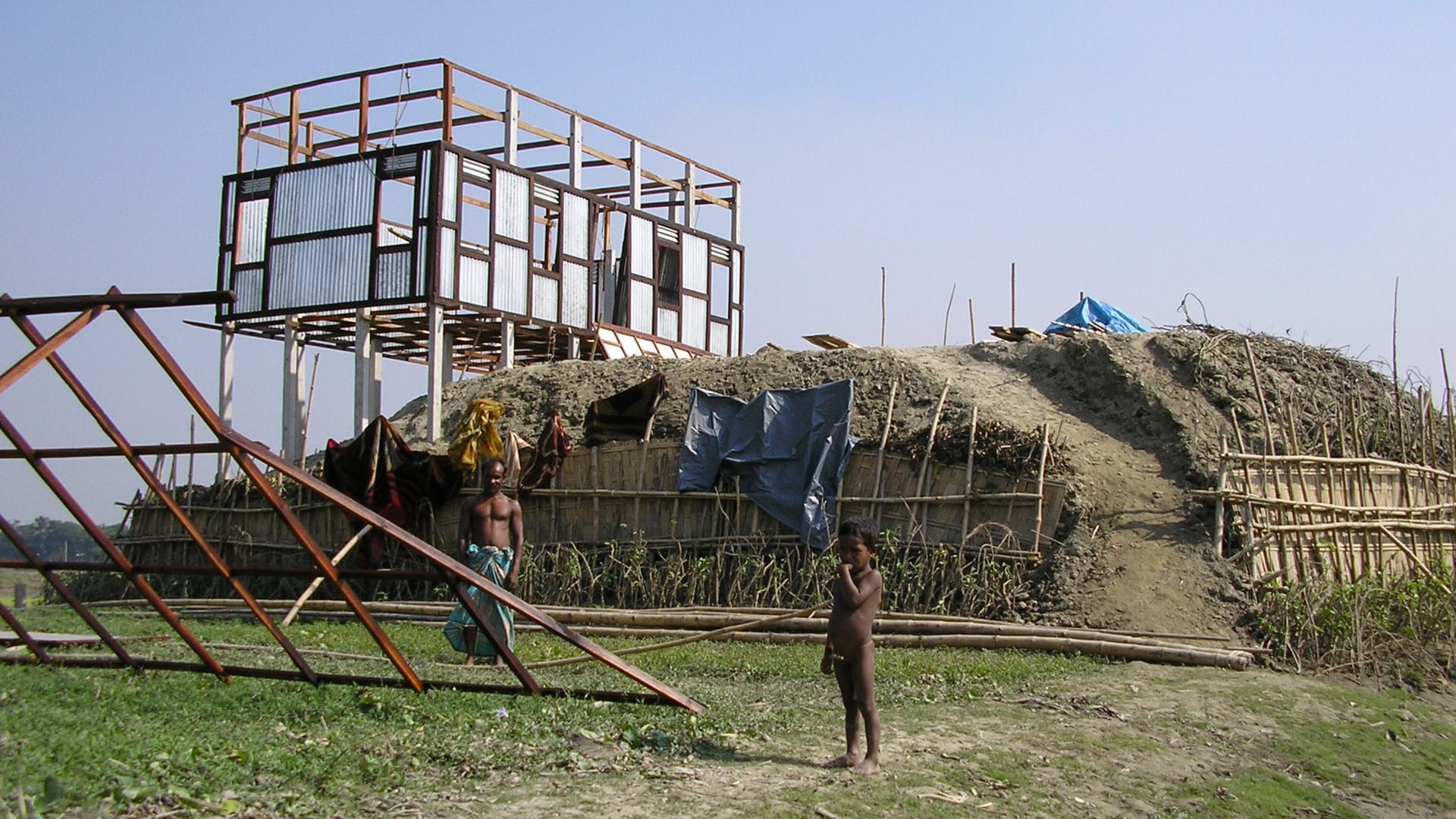Vernacular buildings and adaptation to floods
In flood-prone areas of South and Southeast Asia, vernacular architecture has resulted in various forms of elevated buildings. As climate change causes a wider range of challenges, lessons from this architecture will be key to dealing with future risks.

Floods in South and Southeast Asia: rising threats and adaptive architectures
Floods are the world’s most common natural hazard, and climate change is causing these to be more severe and occur more often. The greatest incidences of flooding occur in South and Southeast Asia. Areas around the Ganges-Brahmaputra and Mekong river basins, in particular, regularly experience major problems. Vernacular architectures in these areas demonstrate a variety of approaches to dealing with recurring threat of flooding.
Elevated buildings to mitigate flood problems
In the Mekong Delta region of Vietnam, buildings are constructed on the most elevated land or river embankments and, where necessary, sites are raised by landfill. Many houses have a platform constructed in the main living room paved with ceramic tile or other waterproof material that serves as an emergency refuge. Some dwellings also have a loft for a similar purpose.
In flood-prone central Thailand, the most typical form of flood adaptation is the elevation of buildings on stilts. During drier periods, the under-croft space is used for a variety of domestic functions.
In the world’s largest river delta in Bangladesh, settlements are built on mounds created by raising the land with soil excavated from fishponds or drainage channels. Constructing buildings on a raised plinth of compacted earth gives additional flood proofing. In very low-lying areas, buildings are raised on stilts.

Opportunity for storage of drinking water and safe sanitation
Flood-prone areas that experience additional difficulties due to climate change face serious challenges concerning drinking water and sanitation. They require a special focus on Sustainable Development Goal 6 (SDG 6).
Houses protected from floods provide an opportunity for storage of drinking water and safe sanitation. Such housing also relates to SDG 13 on climate action, particularly its target 13.1, which is concerned with strengthening resilience and adaptive capacity to climate-related disasters such as floods. To complement existing governmental and non-governmental initiatives, drawing on local vernacular design knowledge, as evident in Asian flood-adaptive building patterns, can prove effective.
Future long-term strategies for flood-adaptive housing
While the SDGs provide a structure for action until 2030, beyond that timeframe a range of uncertainties can be expected to magnify and possibly prevail, even if the SDG targets and indicators are met to a satisfactory level. Climate change is one of the most pressing challenges for the planet, and while flood-adaptive vernacular housing has coped well in the past, the lessons gained from this experience need to inform future long-term strategies for dealing with a magnified risk context where previous impact thresholds will be exceeded.
Traditional and innovative approaches will need to be harmonised, with scientific knowledge drawing on traditional knowledge of vernacular design and construction practices.
Floods aren’t the only threat
The COVID-19 pandemic demonstrated the world’s vulnerability to biohazards. Alongside that, massive demographic transitions relating to human conflicts exacerbates this vulnerability. It is a trend that may continue and assume different forms in the future.
Traditional ways of learning, sharing and interacting reflected in vernacular building practices offer the potential to address these challenges through a more sensitive relationship with nature. Future research, knowledge generation and dissemination, together with action, will therefore need to be aligned to such a strategy.
Industrial sectors
Water supply; sewerage, waste management and remediation activities
Construction
Accommodation and food service activities
Professional, scientific and technical activities
Human health and social work activities
Activities of extraterritorial organizations and bodies
Habitat at the New European Bauhaus Festival and the STI Forum
This story is part of “Habitat: Embracing change in the post-2030 future”. Habitat was discussed at the side event “New habitats for the post-2030 future” during the New European Bauhaus Festival on 10 June 2022. At the STI Forum of 2023, a science policy brief recommendation on Habitat was published under the category “science-policy-society interface”: Enablers for transformative change to sustain people and nature-centred world. Download recommendation >
Contribution to story
This is “HABITAT: Embracing Change in the Post 2030 Future” Exhibition designed and curated by Dr Sandra Piesik, 3 ideas B.V in collaboration with HABITAT Coalition and VITO
- Copy editing by Katleen Vandormael, Communication Manager G-STIC, VITO
Cover image: Village in Bangladesh built on wooden piles as it is sinking and submerging as the water levels in this south east Asian country are rising due to climate change and global warming © StevenK, Shutterstock
“HABITAT: Vernacular Architecture for a Changing Planet” published by Thames & Hudson
- “HABITAT: Vernacular Architecture for a Changing Planet” published by Abrams
- “Habitat: Traditionelle Bauweisen für den globalen Wandel” published by DETAIL Special
- “Habiter la planète: Atlas mondial de l'architecture vernaculaire” published by Flammarion First Prize Winner at “J’aime le livre d’art”, Paris 2017
- “HABITAT: Arquitectura vernácula para un planeta cambiante” published by Blume
- “HABITAT: Vernacular Architecture for a Changing Climate’ published by Thames & Hudson UK, USA, and Shufuhsa
